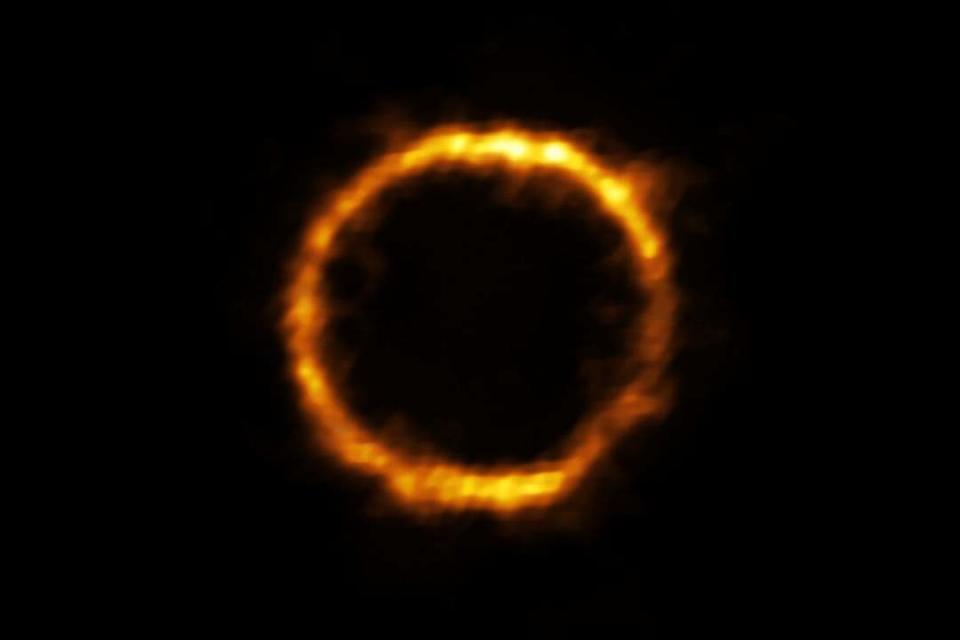Astronomers discover extremely distant galaxy that looks 'surprisingly' like the Milky Way

Astronomers have discovered an extremely distant galaxy which looks “surprisingly” like the Milky Way.
The galaxy, named SPT0418-47, looks as it was when the universe was just 1.4 billion years old.
This is because it took more than 12 billion years for the light from this faraway galaxy to reach Earth.
According to the researchers, the findings suggest that this galaxy is "surprisingly unchaotic, contradicting theories that all galaxies in the early universe were turbulent and unstable".
Study co-author Simona Vegetti, from the Max Planck Institute for Astrophysics in Germany, said: “What we found was quite puzzling.
"Despite forming stars at a high rate, and therefore being the site of highly energetic processes, SPT0418-47 is the most well-ordered galaxy disc ever observed in the early universe.
"This result is quite unexpected and has important implications for how we think galaxies evolve."

Images of the galaxy were taken using European Southern Observatory’s Atacama Large Millimetre/submillimetre Array (ALMA), a group of telescopes in the Atacama Desert of northern Chile.
Because SPT0418-47 is so far away, the astronomers took help from a nearby galaxy by converting it into a giant magnifying glass, an effect known as gravitational lensing.
The result is a rather "misshapen and magnified" version of SPT0418-47, appearing in the sky as a near-perfect ring of light.
The astronomers then used computer modelling to reconstruct the galaxy’s true shape and found that it resembled a lot like the Milky Way - with a rotating disc and a bulge, where a large group of stars are packed tightly around the galactic centre.
Co-author Filippo Fraternali, from the Kapteyn Astronomical Institute, University of Groningen in the Netherlands, added: "The big surprise was to find that this galaxy is actually quite similar to nearby galaxies, contrary to all expectations from the models and previous, less detailed, observations."
According to the researchers, this is the first time a bulge has been seen this early in the history of the universe.
They say the findings, published in the journal Nature, raise questions about how a well-ordered galaxy could have formed so soon after the Big Bang.
Francesca Rizzo, a PhD student from the Max Planck Institute for Astrophysics, who led the research, said: “When I first saw the reconstructed image of SPT0418-47 I could not believe it: a treasure chest was opening.
She added: “This result represents a breakthrough in the field of galaxy formation, showing that the structures that we observe in nearby spiral galaxies and in our Milky Way were already in place 12 billion years ago.”
Although SPT0418-47 has features similar to the Milky Way, astronomers say they expect it to evolve into a galaxy very different from the one that contains the Solar System.
They believe SPT0418-47 will join the class of elliptical galaxies, another type of galaxies that are dotted across the universe.
Read more
SpaceX Crew Dragon astronauts on their way back to Earth
First look inside Virgin Galactic’s spaceflight cabin
Astronomers detect series of mysterious circular objects in space
Strange radio signal heard in space 'coming from nearby galaxy'

 Yahoo News
Yahoo News 
